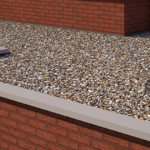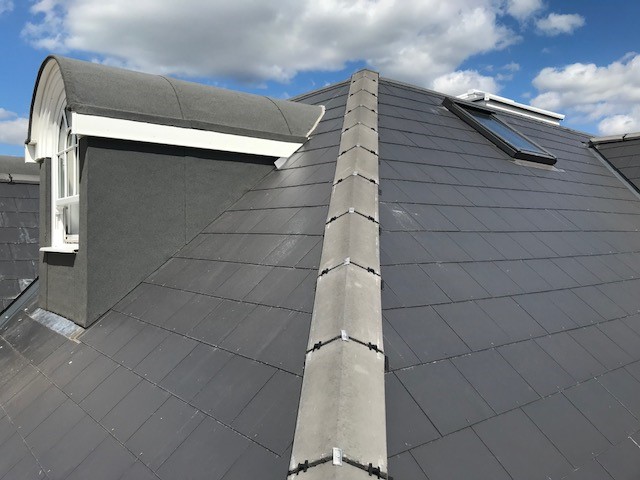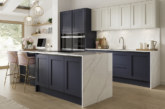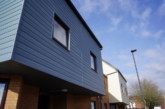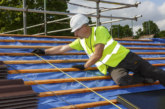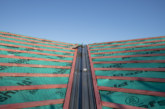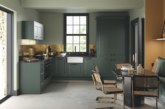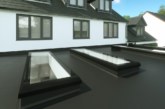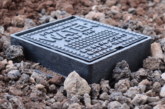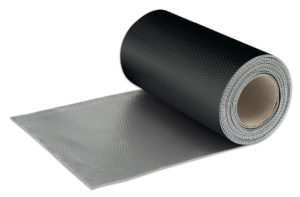 Keith Plummer, Technical Manager at Ubbink outlines some of the reasons behind the steady growth in the market for lead alternative flashing.
Keith Plummer, Technical Manager at Ubbink outlines some of the reasons behind the steady growth in the market for lead alternative flashing.
Q. Lead flashing is a traditional and familiar roofing solution. What do you feel are the advantages of a non-lead flashing?
Working closely with the market, and from contractors’ feedback, we know that they like the features of lead alternative products as they are easy to handle, shape easily by hand, but are strong enough when a bossing tool is needed to form a tighter shape. The lighter weight of non-lead flashing rolls is also favourable when on site as these are easier to handle and work with.
Whatever the key criteria when specifying a lead alternative, there is an option always available – with either smooth or granular finishes to look like, or not look like, lead.
Q. What penetration has non-lead alternative flashings made into the roofing market?
Each year this product range gains more market share. This has come from roofers trying new technologies, and specifications being awarded to these easier to use materials that hold a more sustainable price for planning long term projects.
However, had lead theft not been so prevalent twelve years ago I don’t believe non-lead flashings would have had as made much penetration in to the construction industry. That said consumer confidence in lead hit an all-time low, not because the product had failed, but because it was prone to theft and became costly to keep replacing on dwellings.
 Q. Are there any particular technical considerations to take into account when using a non-lead waterproof flashing on a new property?
Q. Are there any particular technical considerations to take into account when using a non-lead waterproof flashing on a new property?
As with any construction product it should be fit for purpose and meet the project’s requirements in the most efficient way possible. But traditional lead cover flashings require an expansion joint every 1.5m, so for larger roof areas non-lead flashing rolls would be beneficial as they can be used in full roll lengths (5m/6m/12m) saving time on site.
Depending if the project is new build or retrofit, it would be prudent to also check the third-party testing endorsements the product holds and the fire rating to see if it will be covered under NHBC.
Q. The exterior look of a new home is of critical importance and roofing constitutes a large area. Can Ubiflex meet the varied design options used by housebuilders?
There are certain limitations that Ubiflex has, it cannot be used in horizontal boxed gutters or on large flat roof areas, but overall for a typical domestic property Ubiflex can meet most design criteria. With the range being extended thanks to the addition of Ubiflex Extreme we certainly have most aesthetic options covered with the standard granular B3 rolls and the new smooth Extreme rolls. The way Ubiflex is dressed is the same as traditional lead (without the need of patination oils) and therefore can look as neat in all applications.
Q. What solutions have you recently introduced to meet changing market demands?
Our smooth finished Ubiflex Extreme duo sided roll (grey/black) was introduced to allow installations in greater temperature variances, for the harsher weather climates we face each year. Fully BBA and BRE certified it supports increased sales for a smaller stock holding. Last year we saw a higher demand for a more cost-effective non-lead flashing roll that is fully adhesive for retrofit projects. Consequently we launched the new Ubiform + flashing.
With BS 8612 very much in mind a new Ambi handed Dry Verge system was designed and manufactured to be installed with the most common metric interlocking tiles, and to compliment the Dry Verge a truly ventilated Dry Ridge System, suitable for profiled and flat interlocking tiles, slates as well as plain tiles.
Flat roof ventilation/termination up to duct sizes of 180mm has been a part of the Ubbink portfolio for over twenty years, but with more flat roof coverings being introduced we found we were unable to offer a full solution for ventilation/termination on a flat roof. So, we now offer product to suit; Asphalt, GRP, Felt, PVC, EPDM, and Bitumen flat roof coverings, making the specification and installation process far easier.

